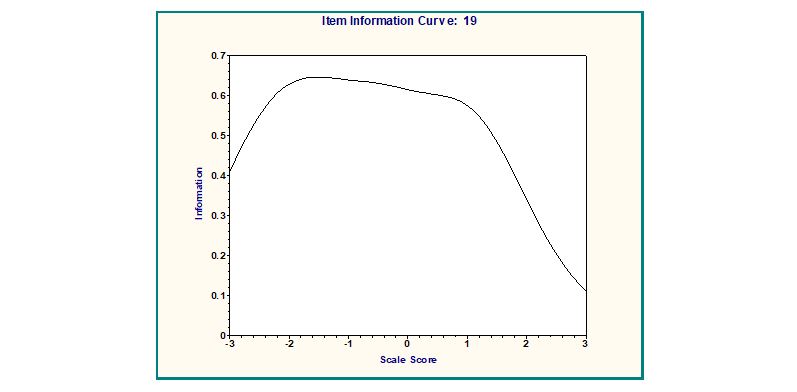Development of Scientific Mind Scale for Junior High School Students in the Three Southern Border Provinces by Applying Polytomous Item Response Theory
DOI:
https://doi.org/10.14456/psruhss.2024.26Keywords:
Scientific mind, Three southern border provinces, Polytomous item response theoryAbstract
The purposes of this research were 1) to construct of scientific mind scale for junior high school students in the three southern border provinces 2) to verify the quality of scientific mind scale for junior high school students in the three southern border provinces by applying polytomous item response theory. The sample were 675 student selected by three-stage random sampling technique. The students selected were studying in junior high school under the jurisdiction of the Secondary Education Office Service Area and Office of the Private Education in the three southern border provinces. Verify the quality by content validity, discrimination and reliability and the quality of the measurement scale by Polytomous Item Response Theory. Moreover, discriminant and difficulty, and test information was conducted via Grade Response Model (GRM).
The findings were; 1. The Measurement Scientific Mind Scale for Lower Secondary School in the Three Southern Border Provinces composed 10 components including 1) curiosity 2) honesty 3) patience, strive and persevere 4) orderliness and prudence 5) responsibility 6) initiative 7) rationality 8) generosity 9) cooperation and 10) good attitude toward science. Each component has 4 indicative behaviors, a total of 40 indicative behaviors. During the construction of the measurement, there were quality checks and improvements until a total of 40 item. The quality measurement scale. Content validity of the scale range from 0.71-1.00, t-test was used to analyze the discrimination. The reliability was 0.893 2. The quality of scientific mind scale for junior high school students in the three southern border provinces by applying polytomous item response theory, Grade Response Model (GRM). The slope parameter(α) is between 0.58-1.45 and the difficulty value The threshold value of each item (β) is the lowest order value, and reliability is 0.9216
References
จงรักษ์ ภาโส. (2553). การสร้างแบบวัดจิตวิทยาศาสตร์สำหรับนักเรียนชั้นมัธยมศึกษาตอนต้น (วิทยานิพนธ์ปริญญามหาบัณฑิต). เพชรบูรณ์: มหาวิทยาลัยราชภัฏเพชรบูรณ์.
เฉลิมศักดิ์ มะลิงาม. (2558). การพัฒนามาตรวัดจิตวิทยาศาสตร์สำหรับนักเรียนชั้นมัธยมศึกษาตอนต้น: การประยุกต์ใช้การวิเคราะห์กลุ่มแฝงเพื่อกำหนดคะแนนจุดตัด (วิทยานิพนธ์ปริญญามหาบัณฑิต). กรุงเทพฯ: จุฬาลงกรณ์มหาวิทยาลัย.
ชลิดา ไชยพันธ์กุล. (2559). การพัฒนาตัวชี้วัดและเกณฑ์การประเมินจิตวิทยาศาสตร์ของนักเรียน ระดับชั้นมัธยมศึกษาตอนต้น จังหวัดภูเก็ต (วิทยานิพนธ์ปริญญามหาบัณฑิต). นนทบุรี: มหาวิทยาลัยสุโขทัยธรรมาธิราช.
ทรายทอง พวกสันเทียะ. (2553). การพัฒนาแบบวัดจิตวิทยาศาสตร์สำหรับนักเรียนประถมศึกษา (วิทยานิพนธ์ปริญญาดุษฎีบัณฑิต). กรุงเทพฯ: จุฬาลงกรณ์มหาวิทยาลัย.
วรรณพร เพิ่มโสภา, ขนิษฐา ชัยรัตนาวรรณ, และวารุณี ลัภนโชคดี. (2563). การพัฒนาแบบวัดจิตวิทยาศาสตร์ สำหรับนักเรียนชั้นประถมศึกษาปีที่ 6 สังกัดสำนักงานเขตพื้นที่การศึกษาประถมศึกษา สมุทรสงคราม. วารสารศิลปการจัดการ, 4(3), 700-716.
ศิริชัย กาญจนวาสี. (2552). ทฤษฎีการทดสอบแบบดั้งเดิม. กรุงเทพฯ: โรงพิมพ์แห่งจุฬาลงกรณ์มหาวิทยาลัย.
สถาบันส่งเสริมการสอนวิทยาศาสตร์และเทคโนโลยี. (2559). คู่มือวัดผลประเมินผลวิทยาศาสตร์. กรุงเทพฯ: สถาบันส่งเสริมการสอนวิทยาศาสตร์และเทคโนโลยี (สสวท.).
สถาบันส่งเสริมการสอนวิทยาศาสตร์และเทคโนโลยี. (2560). คู่มือครูรายวิชาพื้นฐาน วิทยาศาสตร์ชั้นมัธยมศึกษาปีที่ 2 เล่ม 1. กรุงเทพฯ: สถาบันส่งเสริมการสอนวิทยาศาสตร์และเทคโนโลยี (สสวท.).
สมทบ ไชยฮะนิจ. (2555). การสร้างแบบวัดจิตวิทยาศาสตร์สำหรับนักเรียนชั้นประถมศึกษาปีที่ 6 (วิทยานิพนธ์ปริญญามหาบัณฑิต). มหาสารคาม: มหาวิทยาลัยราชภัฏมหาสารคาม.
สิทธิชัย ทองมาก, วุฒิชัย เนียมเทศ, เรชา ชูสุวรรณ, และฤทัยชนนี สิทธิชัย. (2561). เหลียวหลังแลหน้าคุณภาพการศึกษาในสามจังหวัดชายแดนภาคใต้. วารสารมหาวิทยาลัยนราธิวาสราชนครินทร์ สาขามนุษยศาสตร์และสังคมศาสตร์, 5(ฉบับพิเศษ), 186 – 198.
สุนารี มีใหม่. (2557). การพัฒนาแบบวัดจิตวิทยาศาสตร์ของนักเรียนชั้นมัธยมศึกษาตอนปลาย: การวิเคราะห์ความไม่แปรเปลี่ยนของโมเดลการวัดระหว่างแผนการเรียน (วิทยานิพนธ์ปริญญามหาบัณฑิต). กรุงเทพฯ: จุฬาลงกรณ์มหาวิทยาลัย.
Ayala, R. J. (2009). The theory and Practice of Item Response Theory. United States of America: The Guildford Press.
Baker, F. (1985). The Basic of Item Response Theory. Journal of Educational Measurement, 23(3), 267-279.
Considine, J., Botti, M., & Thomas, S. (2005). Design, format, validity and reliability of multiple choice questions for use in nursing research and education. Collegian, 12(1), 19–24. https://doi.org/10.1016/S1322-7696(08)60478-3
Hambleton, R. K., & Jones, R. W. (1993). Comparison of classical test theory and item response theory and their applications to test development. Educational Measurement: Issues and Practice, 12(3), 38–47. https://doi.org/10.1111/j.1745-3992.1993.tb00543.x
Krathwohl, D. R., Bloom, B. S., & Masia, B. B. (1964). Taxonomy of educational objectives: the classification of educational goals (Affective domain, Vol. Handbook II). New York: David McKay.
Lichtenstein, M. J., Owen, S. V., Blalock, C. L., Liu, Y., Ramirez, K. A., Pruski, L. A., ... & Toepperwein, M. A. (2008). Psychometric reevaluation of the scientific attitude inventory‐revised (SAI‐II). Journal of Research in Science Teaching, 45(5), 600-616.
Moore, R. W., & Foy, R. L. H. (1997). The Scientific Attitude Inventory: A revision (SA 2). Journal of Research in Science Teaching, 34(4), 327-336.
Samejima, F. (1969). Estimation of latent ability using a response pattern of graded scores. Psychometrika, 34(1), 1–97. https://doi.org/10.1007/BF03372160
Wang, D., Cui, H., & Zhou, F. (2005). Measuring the personality of Chinese: QZPS versus NEO PI‐R. Asian Journal of Social Psychology, 8(1), 97-122.

Downloads
Published
How to Cite
Issue
Section
License
Copyright (c) 2024 Humanities and Social Sciences Journal of Pibulsongkram Rajabhat University

This work is licensed under a Creative Commons Attribution-NonCommercial-NoDerivatives 4.0 International License.
Any articles or comments appearing in the Journal of Humanities and Social Sciences, Rajabhat Phibulsongkram University, are the intellectual property of the authors, and do not necessarily reflect the views of the editorial board. Published articles are copyrighted by the Journal of Humanities and Social Sciences, Rajabhat Phibulsongkram University.







